Y Filltir Sgwâr/The Square Mile: The British at Christmas time
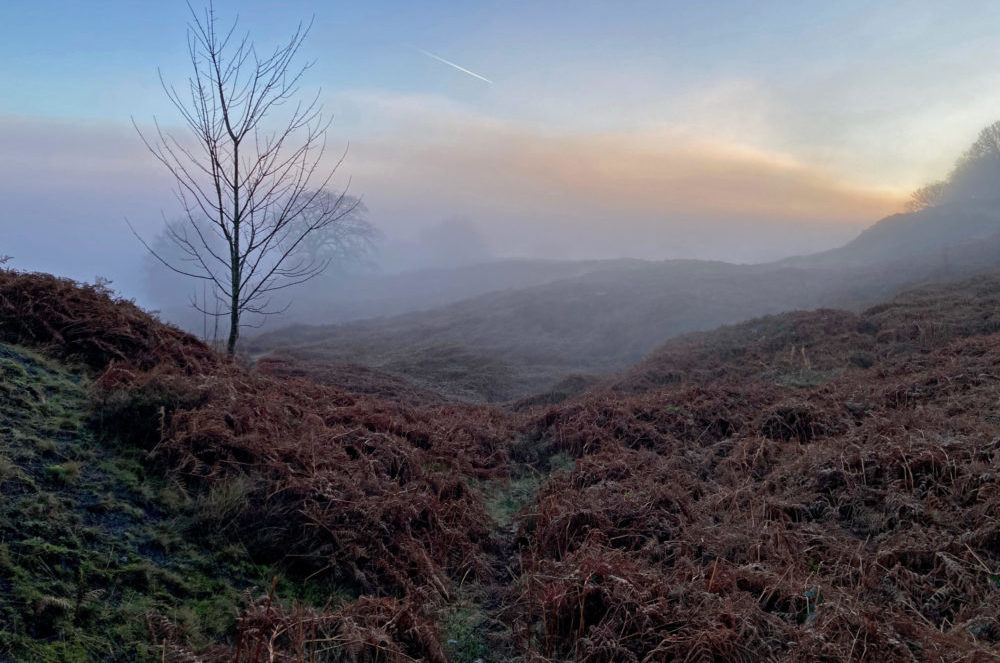
In a year long series Tom Maloney, from Abersychan, shows how you can love a place so well it becomes a part of you.
Over the series I have written several articles about the landscape that is The British, Abersychan. It is literally on my doorstep and is a go to place for me, whether for a short walk or a longer wander. I ‘explore’ there a good many times each month and there is always something new that catches my eye.
It is I think an environment that Carwyn Graves, author of ‘Tir – The Story of the Welsh Landscape’ would call a ‘blasted landscape’. These two words stay with me now, they are in my head whenever I walk. We live in a digital, online age, but there is no substitute for a good book and Carwyn has caught something in this description that is spot on.
‘Blasted landscape’
And yet … for all that it is a ‘blasted’ landscape, it is also complex and beautiful in a truly rugged way.
This week’s little offering is a glimpse of what makes it so attractive for me during the Winter. Besides, it makes a perfect choice to burn off some of the extra calories taken on during the festive period.
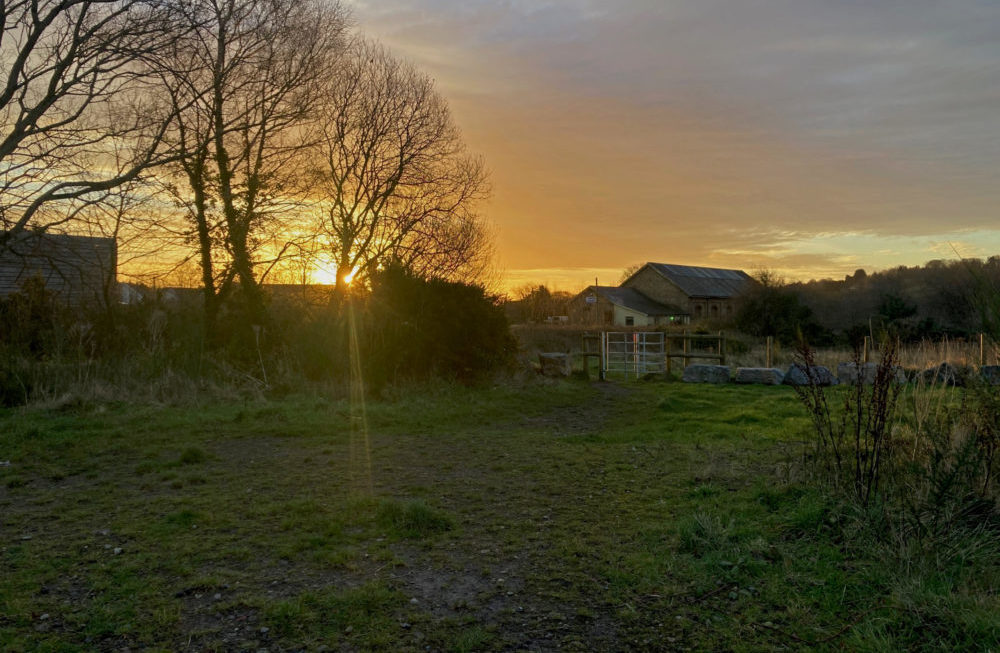
Surprisingly, perhaps, the light has been extraordinary in moments this week and there have been times when I have been so reminded of the atmospheric paintings of Casper David Friedrich. I have always thought that this is such a great name for a great artist and his paintings do not let you down, his landscapes are wonderful.
The sunrise over the old railway goods shed and railways sidings on Monday held my attention for quite some time.
I am not sure if the photograph does the moment justice really, but it spoke to me about the golden age of the railway here and the important part that it played in the development of the village.
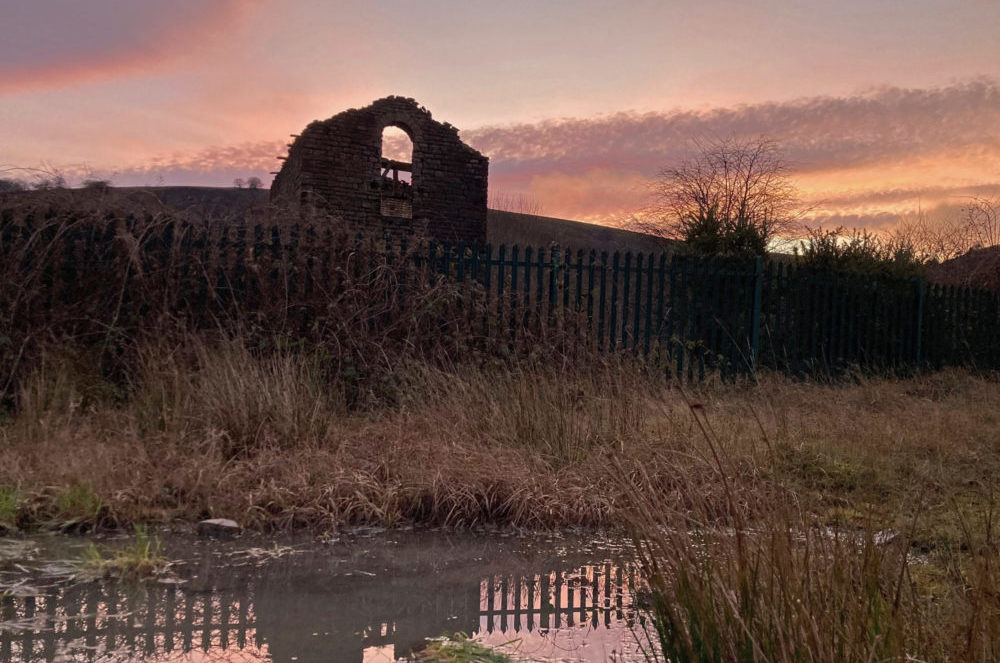
Probably the oldest surviving building from the heady days of the Industrial Revolution is the old engine house near the site where the ironworks once stood.
It is a grand old building, with more than a touch of antiquity about it.
Ancient Rome
Mary Beard, Professor of Classics at Cambridge University, who brings to life the Romans like no other TV presenter, says there is a little of Ancient Rome in all our minds.
With its classical temple shape and arch formed windows, I certainly get that feeling that the architect may well have undertaken a grand tour of Rome, but I suppose that may just be the snippet of Rome in my mind at work.
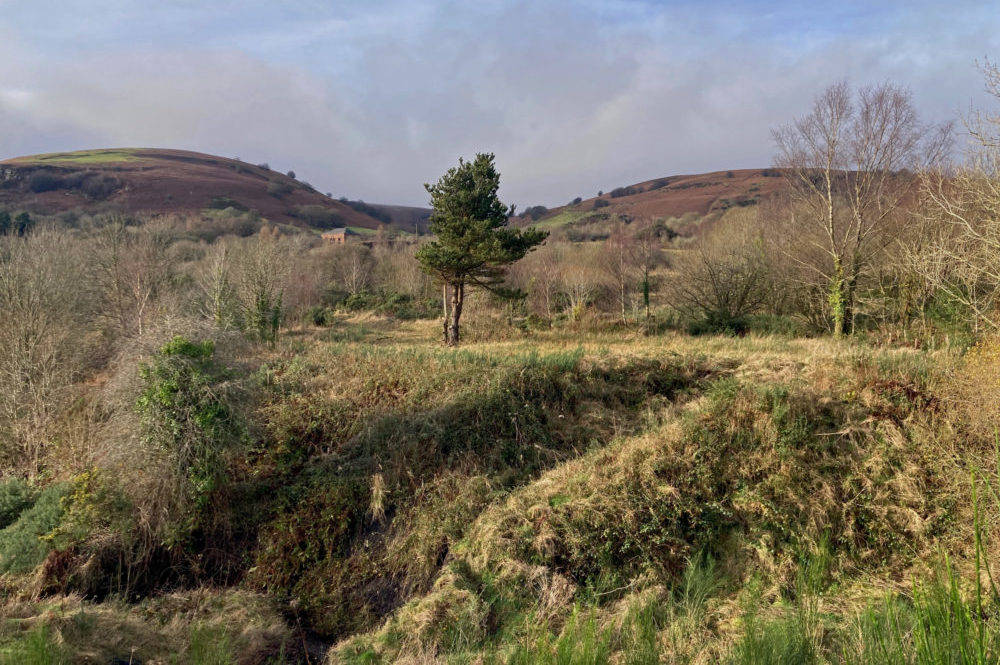
In so many ways The British has become a landscape of hope, ‘tirwedd gobaith’ in the Welsh. I see this so clearly where Nature has once again become the engine house, reclaiming land scarred by the ravages of industry.
Not that long ago at all, in historical terms just yesterday really, a huge conical coal tip dominated the skyline, but today you would hardly believe that such a thing was ever there.
Things change and when they go out of our daily experience they go out of our consciousness as well.
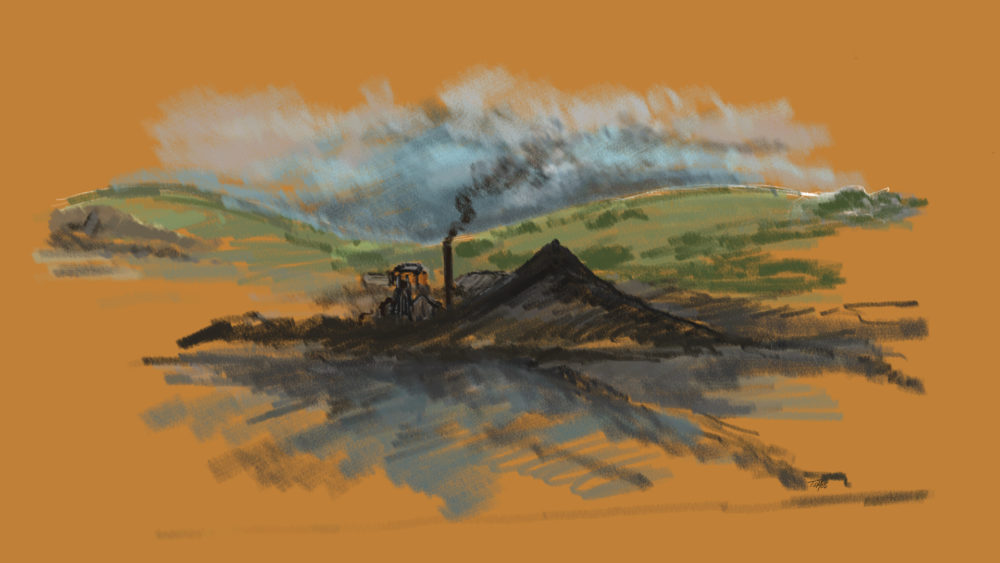
Hidden away in a small place, surrounded by brittle, decaying bracken and spiraling brambles is another intriguing story.
You really have to look hard for this one today, even if you know where it is, but the sky blue tiles give the secret away that an open-air public swimming pool was once enjoyed by the people hereabouts.
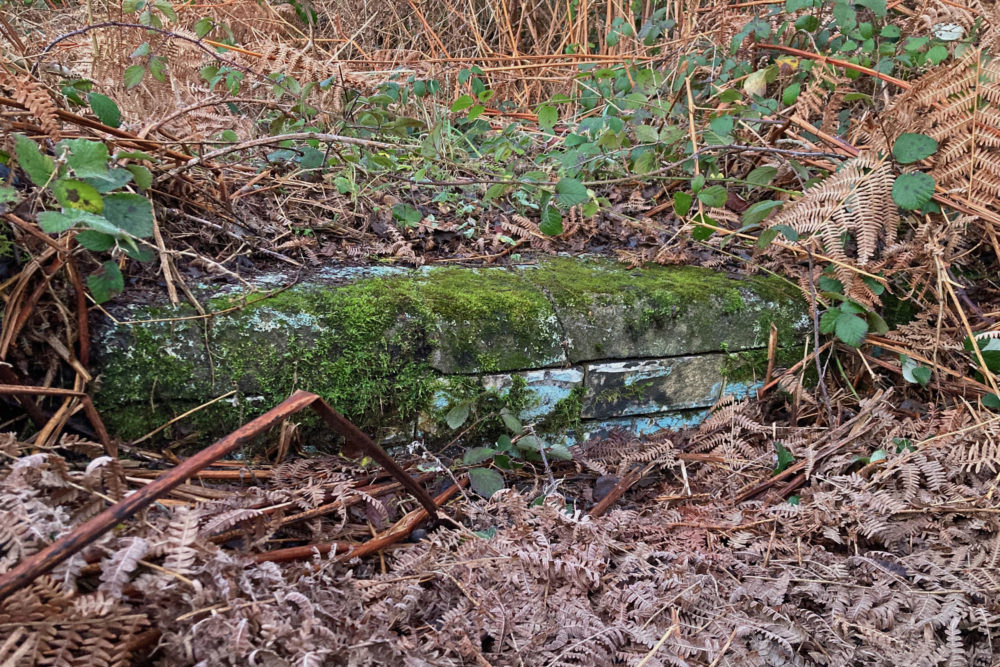
I have to admit that I wasn’t sure if my leg was being pulled just a tad when I first heard someone tell me about this, but the public swimming baths are clearly visible on old maps and then there is still the physical evidence on the ground.
In my mind’s eye I imagine children making their way through this old industrial site with towels slung over their shoulders, dripping wet hair sticking to their foreheads and maybe even hungrily munching on cold bread and butter pudding.
I imagine too the sounds of splashing, shouting with joy, jumping and diving. Such rich, remarkable history that always make me smile.
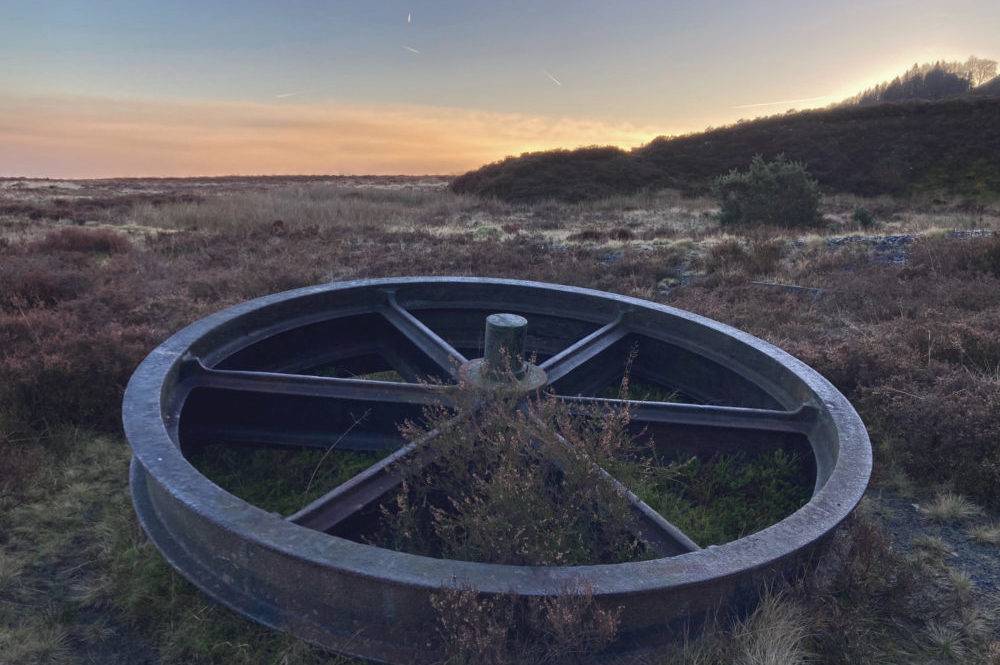
The Cwmbyrgwm and Cwmsychan valleys above the old engine house have significant, poignant reminders of the past that are fascinating.
I always find time to stop and marvel at the giant winding wheel for the water balance pit that lies amongst the heathers.
It is probably close to two hundred years old and though the song of its turning was heard so long ago now, it still speaks of the craftsmanship and engineering of its time.
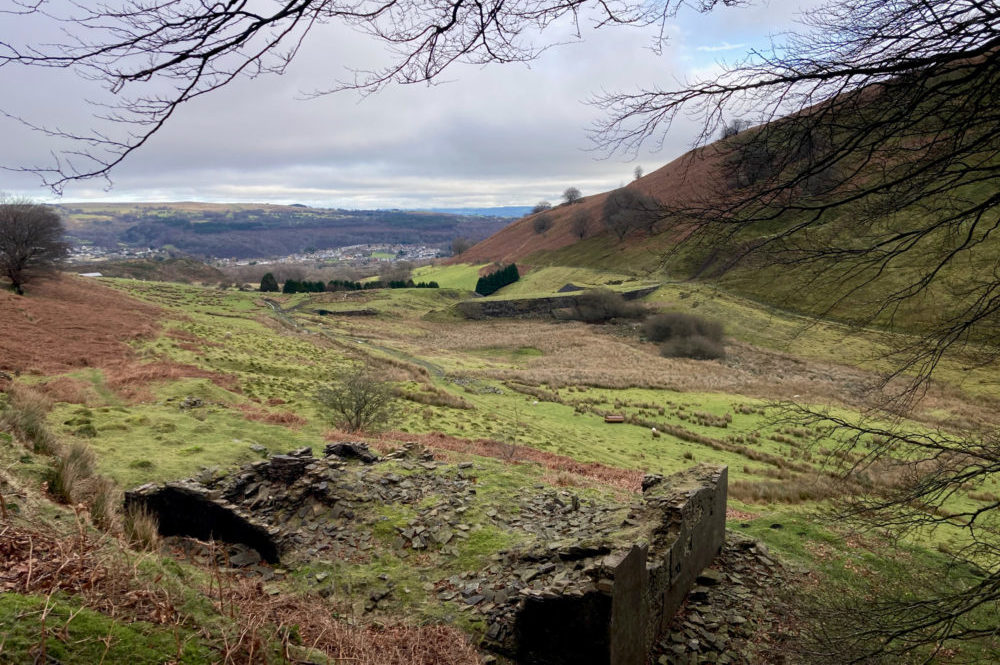
Heavy industry needs water and to fulfill this need a reservoir for the British Ironworks was created high up in the Cwmsychan Valley.
This is one of my favourite places locally and yet it is only a relatively recent discovery for me and I rather suspect that a good many people locally would not know of its existence at all as well.
Conversations
In its day there was a little boathouse here and from conversations with some of the older residents I believe that youngsters may well have taken themselves up here to go swimming as well. The things that we do when we are young!
Occasionally it partially fills with water after heavy rain, having a semblance of how it may once have looked. It must have been an impressive sight for the good folk of Ty Cwmsychan Farm just above.
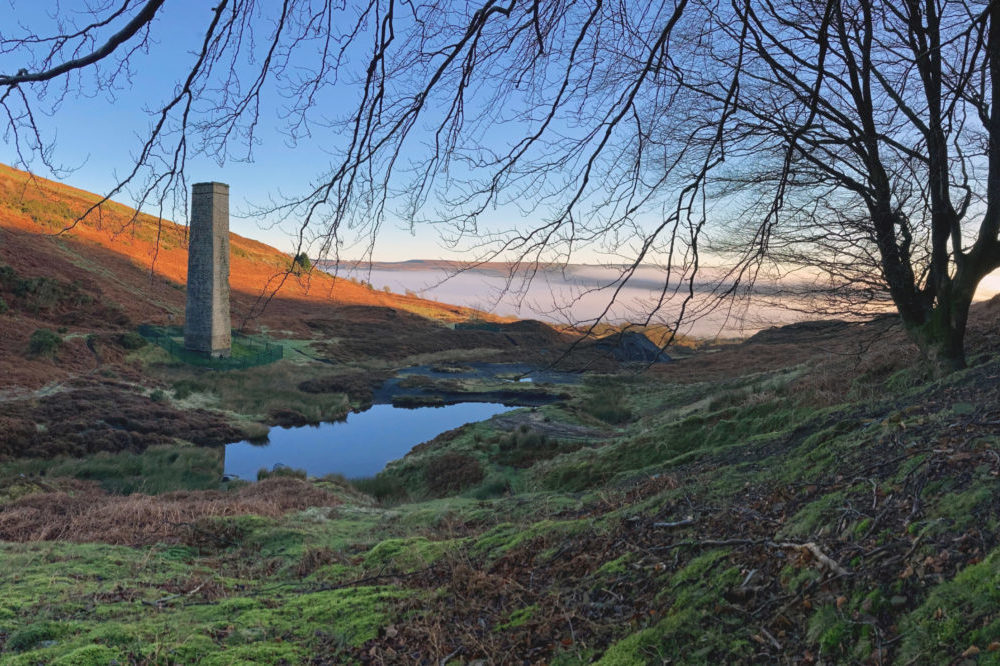
The most iconic feature of The British landscape and probably the most enigmatic as well is the stack at Cwmbyrgwm, which is visible from a distance from many locations in the Abersychan area.
Early on Boxing Day morning the view I had from above this industrial relic was glorious.
Bathed in the morning sunlight the hillside was the colour of Welsh gold and a blanket of soft, silvery mist lay in the valley below.
I felt on top of the world and I could not have asked for more.
Read more about The British here.
Support our Nation today
For the price of a cup of coffee a month you can help us create an independent, not-for-profit, national news service for the people of Wales, by the people of Wales.




